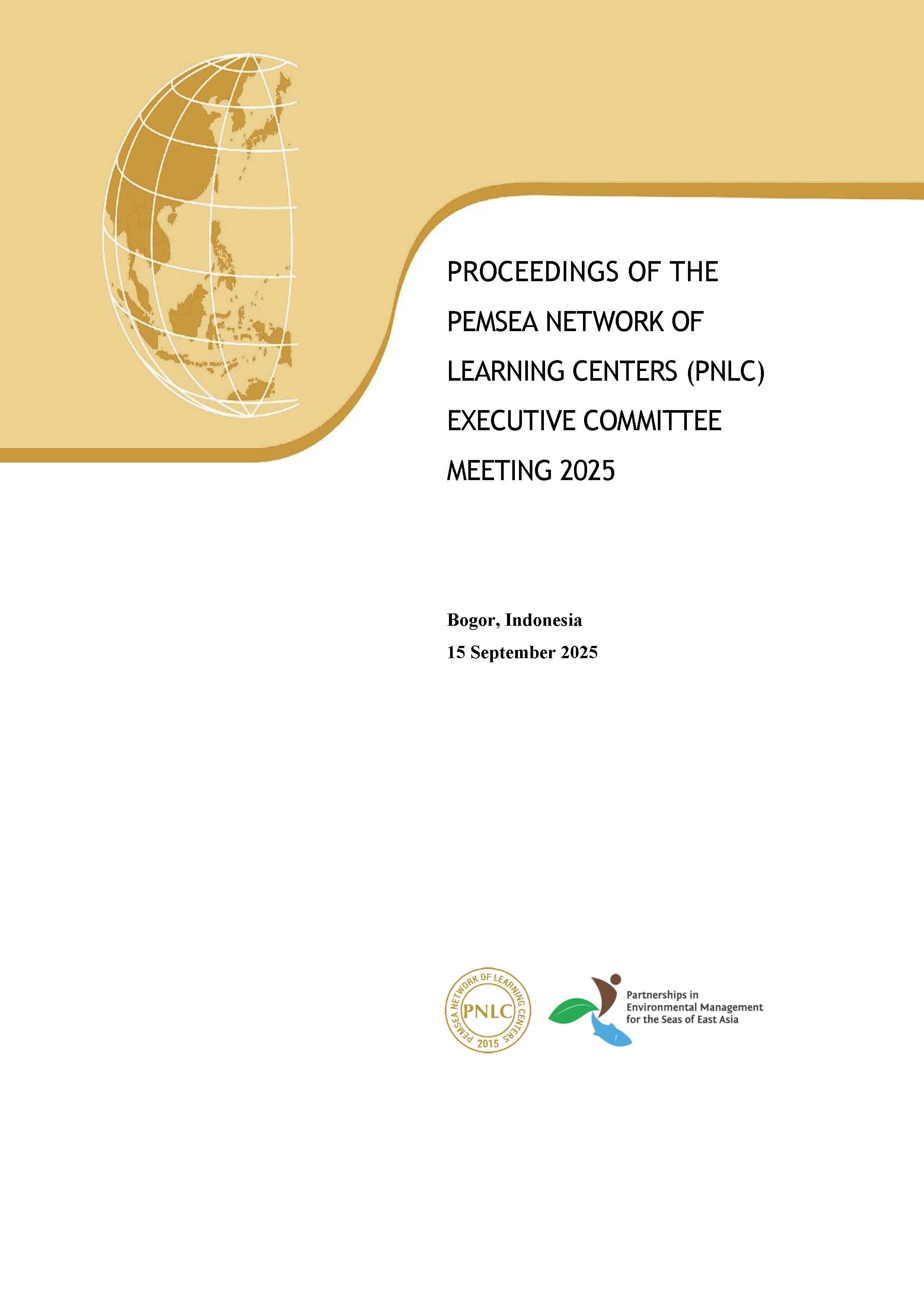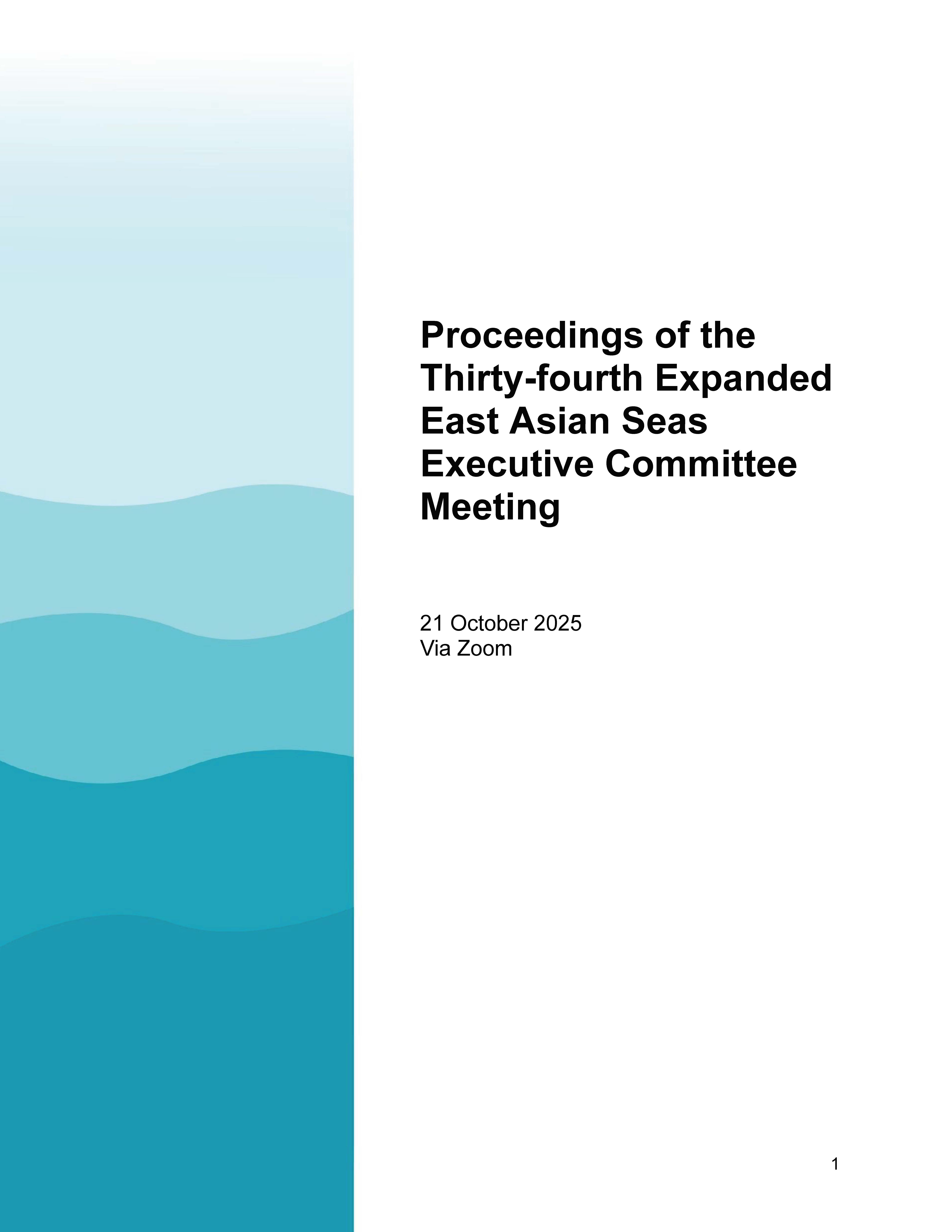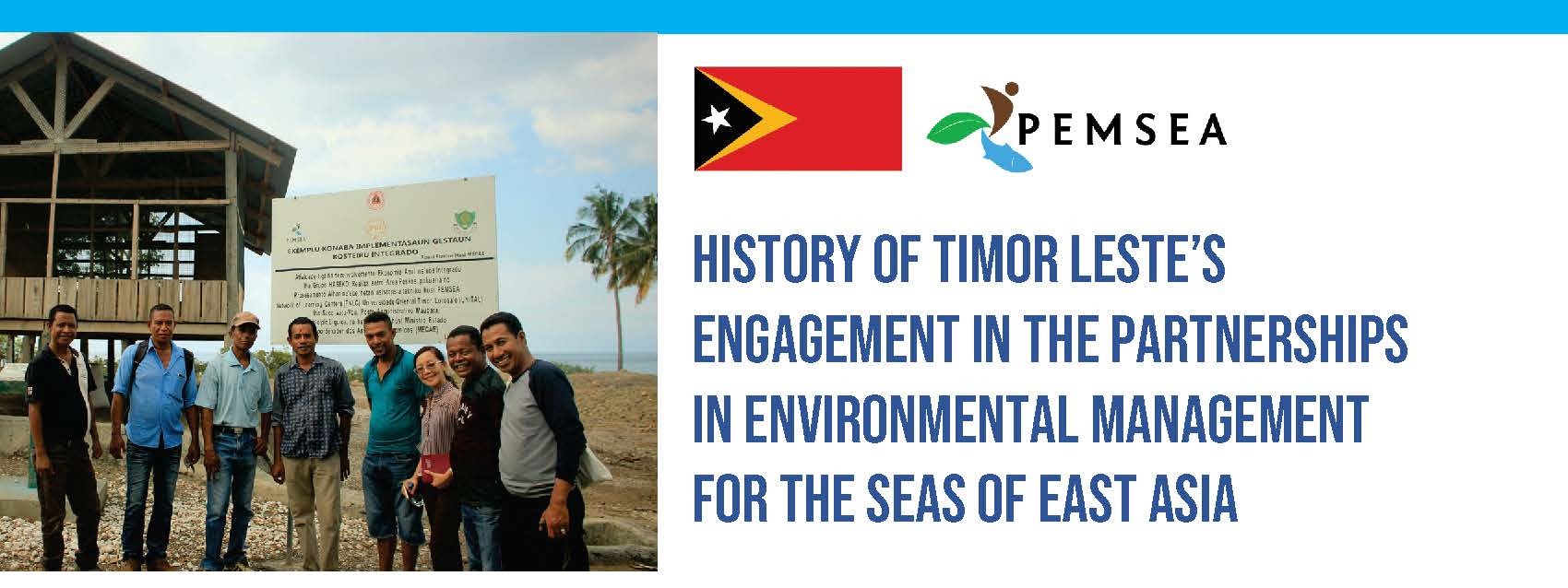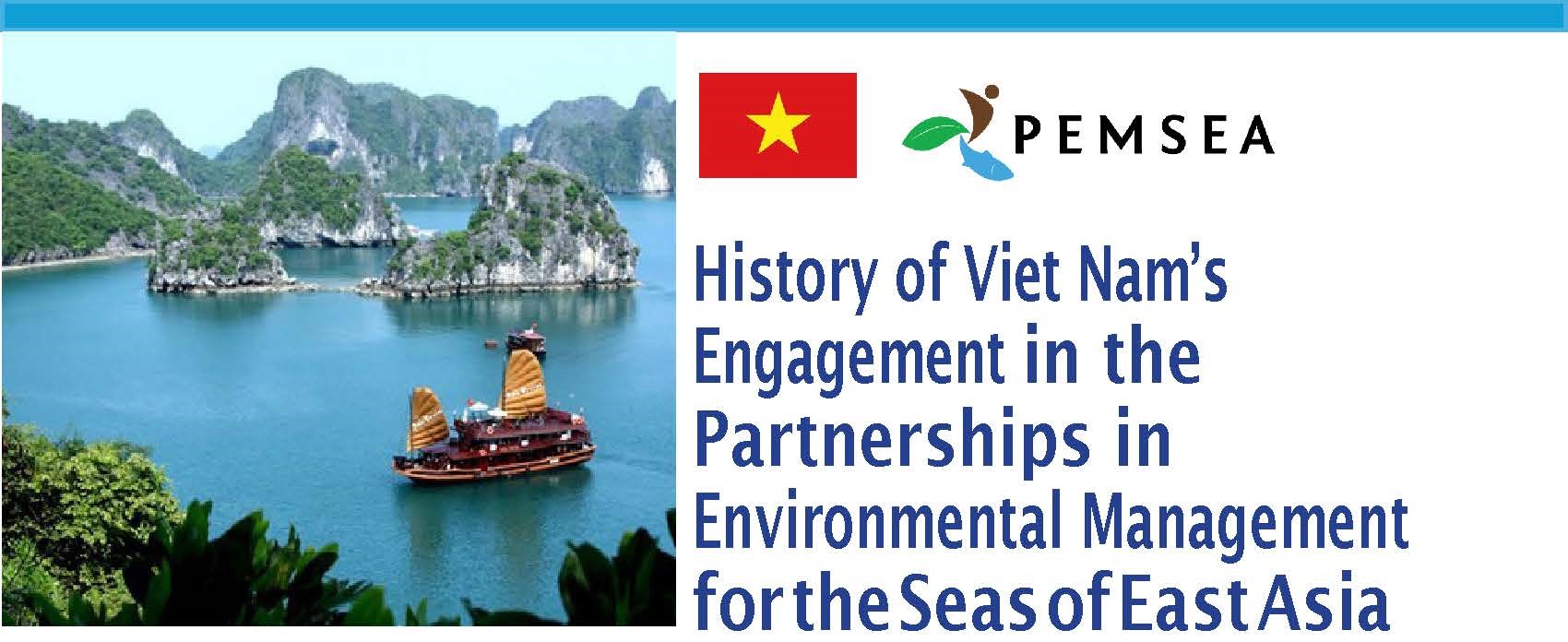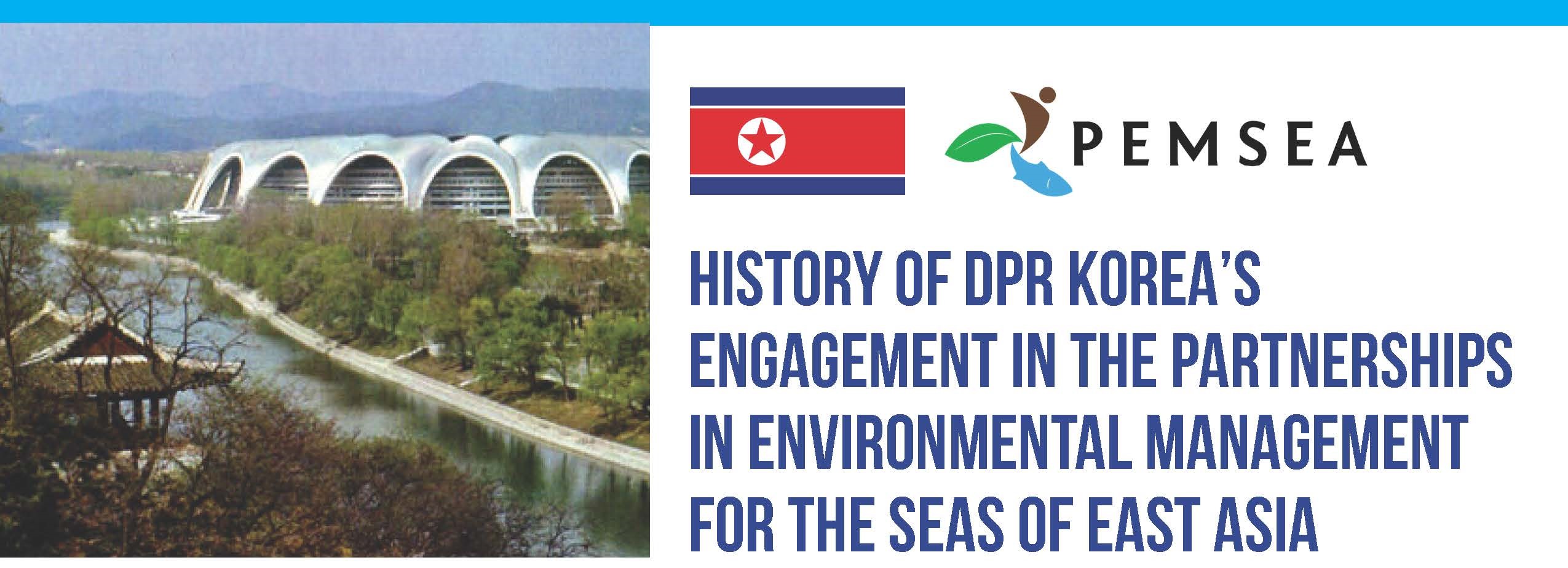
Breadcrumb
The PEMSEA Story
PUBLICATION DATE:
Wednesday, December 01, 2021
PUBLICATION TYPE:
Books
STATUS:
Available
DESCRIPTION:
The PEMSEA Story: 28 years of collaboration for the Seas of East Asia chronicles the partnerships’ journey of transformation which started as a fledgling pollution project in 1993 to become a regional coordination mechanism with an international legal personality.
PEMSEA works on a range of coastal and marine management programs such as biodiversity conservation, climate change and disaster risk reduction, marine pollution and solid waste management and cross cutting programs on ocean governance, capacity development and knowledge management and blue economy and sustainable financing under the Sustainable Development Strategy for the Seas of East Asia (SDS-SEA).
This book provides an updated narrative on why strategic partnerships and integrated management solutions are important elements in establishing a regional partnership mechanism to manage large marine ecosystems. It focuses on the successes and lessons learned from PEMSEA’s experience at the local, national and regional levels to protect, manage and restore coasts and ocean, aligned with international agreements and targets such the UN SDGs, the Aichi Biodiversity Agreement, the UN Framework Convention on Climate Change, among others.
The story was developed primarily by consolidating and updating information provided by the UNDP/GEF Scaling Up Implementation of SDS-SEA project’s knowledge products and reports and supplemented by interviews with key partners, collaborators and stakeholders.
RELATED PUBLICATIONS
PEMSEA NETWORK OF LEARNING CENTERS (PNLC) 2025 Executive Committee Meeting Proceedings
The 2025 PNLC Executive Committee (PNLC EC) Meeting was organized by PNLC Secretariat on 15 September 2025 in Bogor, Indonesia. It was participated by Prof. Yonvitner of the Center for Coastal and Marine Resources Studies of the IPB University (CCMRS-IPB) and President of the PNLC, Dr. Fang Qinhua, Deputy Director of the Coastal and Ocean Management Institute of Xiamen University (COMI-XU) and Vice-President of the PNLC, and Ms. Aimee T. Gonzales, PEMSEA Resource Facility (PRF) Executive Director as members of the PNLC Executive Committee. Ms. Isdahartatie PNLC secretariat Coordinator/ CCMRS-IPB University, Ms. Nancy Bermas from PRF, Francesca Cortez (PRF Secretariat Assistant) and Lusita Meilana, PNLC Secretariat staff. The meeting was chaired by Prof. Yonvitner. Ms. Isdahartati served as the Secretariat of the meeting.
The following supporting documents are annexed to these proceedings:
- Annex 1: Meeting Agenda / Program
- Annex 2: Links to the meeting documents, presentation and photos
- Annex 3: List of participants
Proceedings of the Thirty-fourth Expanded East Asian Seas Executive Committee Meeting
The Expanded East Asian Seas (EAS) Executive Committee convened its 34th Executive Committee Meeting on 21 October 2025 online via Zoom. The meeting was attended by EAS Partnership Council Chair Attorney Jonas Leones; Intergovernmental Session Chair Mr. Le Dai Thang; Intergovernmental Session Co-Chair Dr. Xinwei Yu; Technical Session Chair Dr. Suk-Jae Kwon; and Technical Session Co-Chair Dr. Wakita Kazumi. The PEMSEA Resource Facility (PRF), led by Executive Director (ED) Ms. Aimee T. Gonzales, served as Secretariat to the meeting. PEMSEA Country Partners in attendance included national focal points and representatives from Cambodia, China, Indonesia, Japan, Lao PDR, the Philippines, the Republic of Korea, Singapore, Timor-Leste, and Viet Nam. Non-Country Partners present included representatives from the ASEAN Centre for Biodiversity, Ipieca GISEA, Oil Spill Response Limited, National Marine Hazard Mitigation Service, International Center for Environmental Management of Enclosed Coastal Seas (EMECS), PEMSEA Network of Local Governments, and Korea Institute of Ocean Science & Technology, among others. Online observers included staff from the PEMSEA Resource Facility and UNDP.
History of Timor Leste's engagement in PEMSEA
Since joining PEMSEA in 2006 through the signing of the Haikou Partnership Agreement, Timor-Leste has made remarkable progress in advancing sustainable coastal and ocean governance under the Sustainable Development Strategy for the Seas of East Asia (SDS-SEA). Over the years, the country has implemented Integrated Coastal Management (ICM) programs in key municipalities, developed national ocean and coastal policies, and strengthened inter-agency collaboration for marine protection and livelihood enhancement. Through its participation in regional initiatives such as ATSEA and the Marine Plastics ODA Project, Timor-Leste continues to demonstrate strong commitment to ecosystem-based management, blue economy development, and regional cooperation for healthy and resilient seas.
History of Viet Nam's engagement in PEMSEA
Since 1993, Viet Nam has been an active partner in advancing sustainable coastal and ocean governance in the East Asian Seas through PEMSEA. From pioneering Integrated Coastal Management (ICM) in Da Nang to establishing the Viet Nam Administration of Seas and Islands (VASI), the country has institutionalized ICM in national policy and legislation while fostering regional cooperation through leadership roles in PEMSEA bodies and ministerial forums. Viet Nam’s consistent participation in key initiatives and adoption of major regional declarations underscore its strong commitment to blue economy development, marine ecosystem protection, and the long-term implementation of the Sustainable Development Strategy for the Seas of East Asia (SDS-SEA).
History of DPR Korea's Engagement in PEMSEA
Since joining the regional GEF/UNDP/IMO Marine Pollution Prevention in the East Asian Seas (MPP-EAS) project, the DPR Korea has actively advanced Integrated Coastal Management (ICM) through the establishment of the Nampho demonstration site and the National ICM Training Center at Kim Il Sung University. The country has consistently participated in key regional forums, including the East Asian Seas Congresses and Ministerial Forums, adopting major regional declarations and frameworks such as the SDS-SEA and Manila Declaration. Its engagement reflects a sustained commitment to regional cooperation, marine pollution prevention, and sustainable coastal development under PEMSEA.
Request Print Version
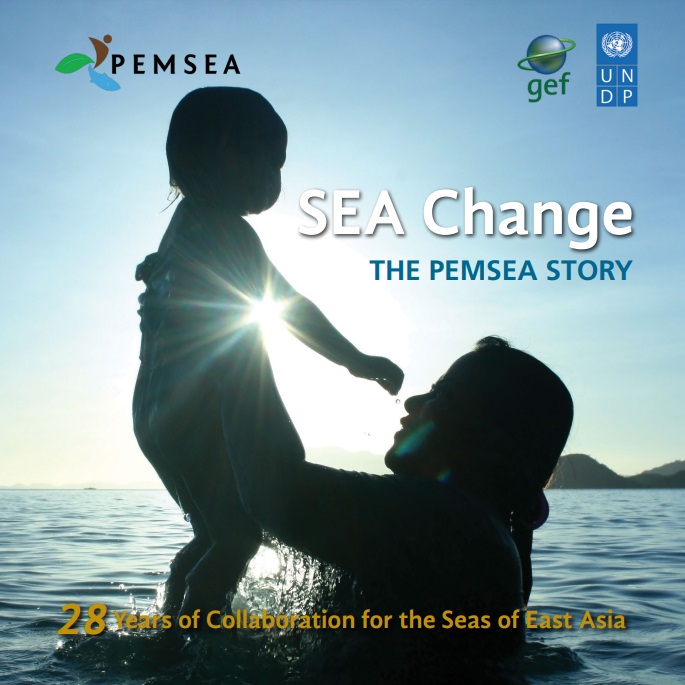
The PEMSEA Story
The PEMSEA Story: 28 years of collaboration for the Seas of East Asia chronicles the partnerships’ journey of transformation which started as a fledgling pollution project in 1993 to become a regional coordination mechanism with an international legal personality.
PEMSEA works on a range of coastal and marine management programs such as biodiversity conservation, climate change and disaster risk reduction, marine pollution and solid waste management and cross cutting programs on ocean governance, capacity development and knowledge management and blue economy and sustainable financing under the Sustainable Development Strategy for the Seas of East Asia (SDS-SEA).
This book provides an updated narrative on why strategic partnerships and integrated management solutions are important elements in establishing a regional partnership mechanism to manage large marine ecosystems. It focuses on the successes and lessons learned from PEMSEA’s experience at the local, national and regional levels to protect, manage and restore coasts and ocean, aligned with international agreements and targets such the UN SDGs, the Aichi Biodiversity Agreement, the UN Framework Convention on Climate Change, among others.
The story was developed primarily by consolidating and updating information provided by the UNDP/GEF Scaling Up Implementation of SDS-SEA project’s knowledge products and reports and supplemented by interviews with key partners, collaborators and stakeholders.
